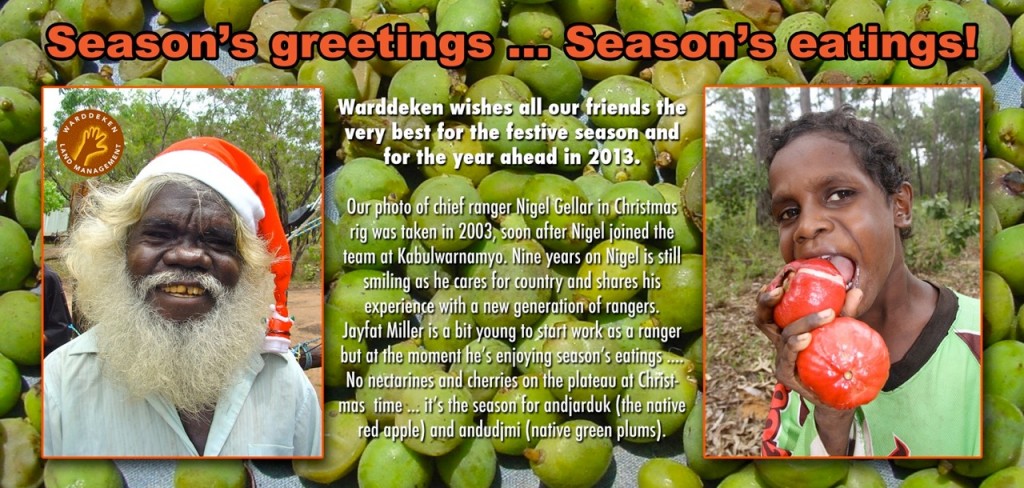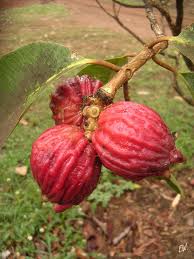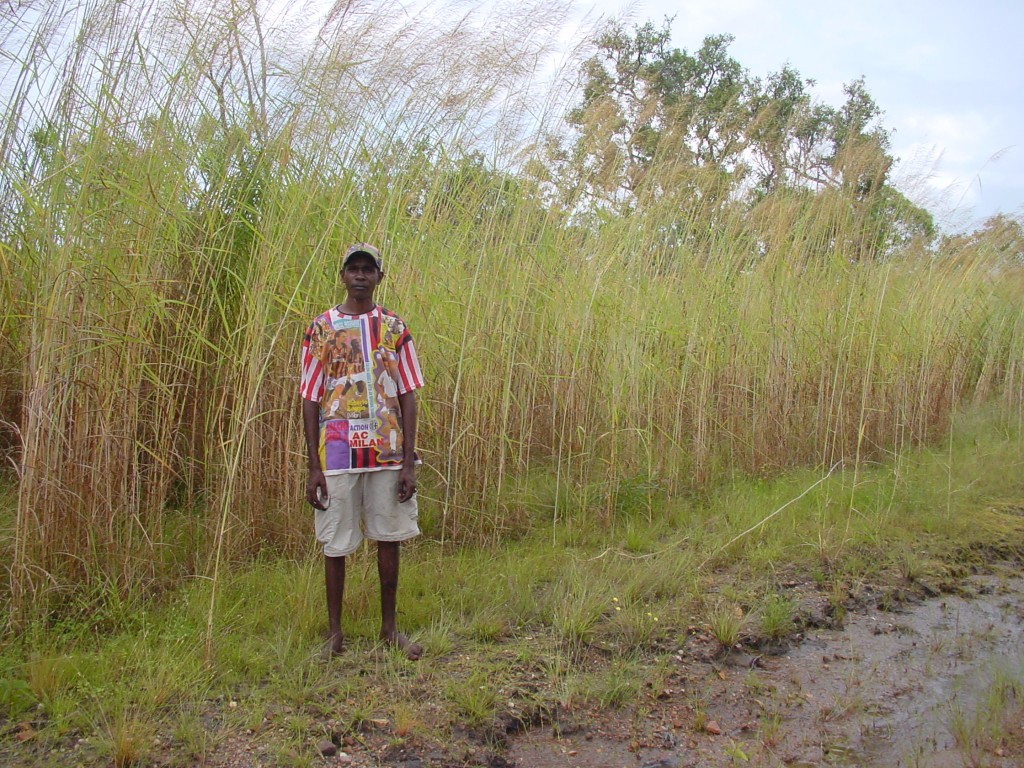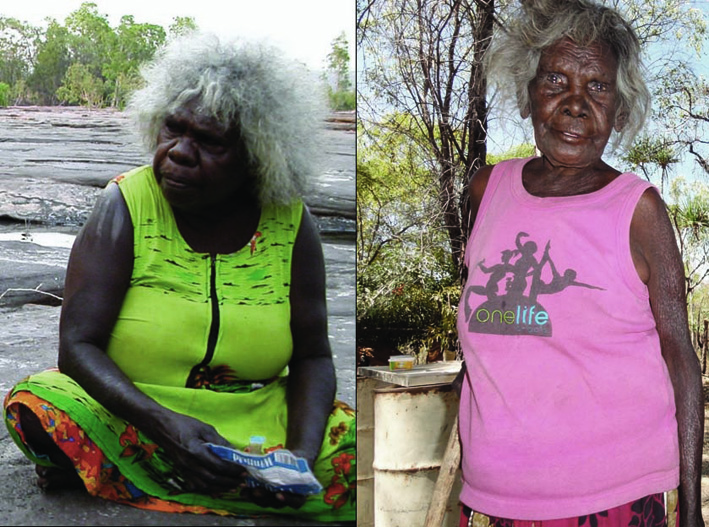An-ngale makka kah-ngeyyo?
What's the name of that plant?
Ma, ngurri-wokbimbu! A transcription exercise.
Note that the Kundedjnjenghmi dialect of Bininj Kunwok is used in this video (spoken on the Arnhem Land plateau around Manmoyi).
In this video made by Warddeken Land Management Ltd (and used with their permission here) you can hear Ngal-wakadj Lillian Guymala from Manmoyi teaching younger family the names of plants that grow in the rock country. If you want to know the English or scientific names of these plants, you can contact us (on the main menu contact tab). The transcript is for you to complete. All of the words are given below in the list after the transcript template, you have to pick them out of the list and fit them into the blanks after the time code. We have started the first few lines and the outline of some words. Now watch the video and see how you go. We'll post our version of the transcript (with English translation) in a later post.
[00:00:00] Someone: Ma!
[00:00:02] Lillian: An-bunbarr, ngurrurdu kabarri-kerribun.
[00:00:05] Lillian: B_ _ _ _ _
[00:00:06] Lillian: M _ _ _ an-_ _ _ _ _ _ _ _
[00:00:09] Lillian: M_ _ _ _ _ _ _ _
[00:00:10] Terrah: An-_ _ _ _ kun-_ _ _ _
[00:00:11] Lillian: An- _ _ _ _
[00:00:12] Terrah: K_ _ _ barri-_ _ _ _ _ _ _ ng_ _ _ _ _ _ _
[00:00:13] Lillian: Woh, namekke.
[00:00:14] Lillian: Mani njamed, an-_ _ _ _ _ _ _ _
[00:00:16] Lillian: Ng_ _ _ _ _ _
[00:00:18] Lillian: M_ _ _ nj_ _ _ _ an-_ _ _ _ _ _ _
[00:00:23] Lillian: An-_ _ _ _ _ _
[00:00:23] Lillian: An-_ _ _ _ _ _
[00:00:26] Lillian: An-_ _ _ _ _
[00:00:27] Lillian: An-_ _ _ _ _
[00:00:29] Lillian: Mani...
[00:00:31] Terrah: An- _ _ _ _ _ _ _
[00:00:32] Speaker 3: eh ee
[00:00:33] Lillian: njamed an-_ _ _ _ _ _ _ _ _ _
[00:00:35] Terrah: an-_ _ _ _ _ _ _ _ _ _
[00:00:36] Lillian: M_ _ _ nj_ _ _ _, an-_ _ _ _ _ _ _ _ _ _
[00:00:40] Lillian: an-_ _ _ _
[00:00:41] Lillian: Dj_ _ _ _ _
[00:00:43] Lillian: k_ _ _ _ _ _ _, k_ _ _ _ _ _ _
[00:00:44] Lillian: b_ _ _ _ _ _
[00:00:46] Mani njamed...
[00:00:47] speaker 3: (inaudible) yerre dja mani njamed...
[00:00:50] speaker 3: mani yi-ngeybom man-yungki
[00:00:51] Terrah: Mani yi-_ _ _ _ _ _ _ M_ _ _!
[00:00:53] speaker 3: yoh, mani yi-ngeybom,
[00:00:55] Terrah: An-ngale mak yi-ngeybom bu bolkkime.
[00:00:57] speaker 3: bu korroko yi-ngeybom
[00:00:58] Mahni, manu?
[00:00:59] Terrah: yo
[00:00:59] Lillian: Man-nuk man-_ _ _ _ _ _
[00:01:01] someone: man-_ _ _ _ _ _ _ _ _ _
[00:01:02] Lillian: b_ _ _ _ b _ _ _ _
[00:01:03] Terrah: Yo, an-bulng... an-b_ _ _ _ _ _ _ _ _
[00:01:05] Lillian: b_ _ _ _ b _ _ _ _
[00:01:06] Terrah: _ _
[00:01:06] Lillian: _ _ _ b_ _ _ nga-_ _ _ _w _ _ _ _w_ _ _
[00:01:07] Terrah: (ka-djekme 'laughs')
Here is the word list of all words used in the transcript.
an-bulngbulng
An-bulu
An-bunbarr
An-bunbarr
An-djoh
An-djedj
An-djoh
an-djungkurrk
An-dudjmi
an-karnbirr
An-kawalh
An-korlh
an-lerrelerre
an-marnanj
An-ngale
an-ngunngun
baleh
barri-biddukkani
bu bolkkime
bu korroko
bulngbulng
bulngbulng
bunbarr
Burdah
dja
Dja
Djarduk
eh ee
kabarri-kerribun
karrbirlk
karrbirlk
Kunj
kun-yarl.
Ma!
Mahni
mak
man-bulngbulng
man-bunbarrmani
Mani
Mani
Mani
Mani
Mani
Mani
mani
mani
Mani
mani
Mani...
man-ngamed
manu
Manu
man-yungki
mula
namekke
nga-ngeywarrewong.
ngurrurdu
ngurrurdu
Nguyungu
njale...
njamed
njamed
njamed
njamed
njamed...
njamed...
nuk
Woh
yerre
yerre
yi-ngeybom
yi-ngeybom
yi-ngeybom
yi-ngeybom
yi-ngeybom
yo
Yo
yo
yoh
Bonj. That is all.






